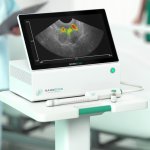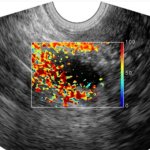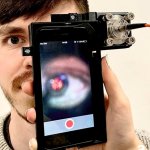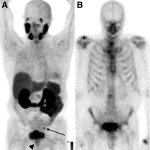
News • Noninvasive stratification
Multiplex PET helps doctors 'see' bowel cancer
Multiplex PET imaging technology could provide a ground-breaking new approach for diagnosing and treating bowel cancer patients, according to scientists in Glasgow.

Multiplex PET imaging technology could provide a ground-breaking new approach for diagnosing and treating bowel cancer patients, according to scientists in Glasgow.

A novel AI-based, non-invasive diagnostic tool enables accurate brain tumor diagnosis, outperforming current classification methods. The tool leverages MRI information to aid clinical decision making.

Researchers work on the first prototype that applies AI to colorectal diagnosis. The prototype achieved a diagnostic acuity of 93.44% and a sensitivity of 99.7% in the detection of high-risk lesions.

An innovative solution based on nanotechnology and ultrasound could prevent over-treatment of patients with rectal cancer. The magnetomotive ultrasound system uses nanotechnology for reliable diagnosis of any spread of rectal cancer to nearby lymph nodes.

A new test to help diagnose Barrett’s oesophagus – a condition that can lead to oesophageal cancer – has reduced the need for invasive endoscopy in thousands of low-risk patients.

A new way to analyze blood samples for suspected sepsis gives doctors test results two days earlier than before – a head start that could mean life or death for patients.

A new guideline for the diagnosis and treatment of cryptococcosis is designed to support medical staff in handling invasive fungal infections and provide guidance and support in decision-making.

A newly-developed biosensor could be an alterative to MRI and mammography for breast cancer screening. The handheld device uses saliva on test strips to determine whether cancer is present.

Researchers in Singapore have developed an AI-based software to assist in the early detection of breast cancer. Using thermal imaging, the program assesses the malignancy of a tumour.

Bone fractures caused by osteoporosis are a common major global health risk. The International Osteoporosis Foundation (IOF) reports that one in three women over the age of 50 will sustain a potentially life-threatening fragility fracture in their remaining lifetimes. Early diagnosis and proactive treatment to keep bones healthy, including prescription medication and lifestyle changes, has the…

A simple blood test could help diagnose patients with glioblastoma, the deadliest form of brain cancer, sparing them from undergoing invasive and highly-risky surgery, report UK researchers.

Three disease subtypes, based on causes rather than symptoms: A new classification model for Parkinson's disease aims to pave the way for better diagnostics and therapies.

A team from the UK and Turkey have developed a contact lens with embedded micro-sensors which can detect changes in eye pressure - a possible indicator of glaucoma.

A research team has developed a nanoparticle-based contrast agent with the properties necessary to successfully use MRI for targeted diagnosis of liver fibrosis.

Certain genetic features are crucial for treatment decisions for AML leukaemia. A team from Münster shows how an AI-based method can predict these features from images of bone marrow smears.

Clinicians tend to disregard patient self-assessments for their diagnostic decisions, new research suggests – a mistake that might cause those patients unnecessary harm.

While genetic information may lead to better treatments, promises of cost savings are unfounded. Instead, a large additional bill is more likely, according to University of Copenhagen researchers.

A new approach to the identification of harmful bacteria: A new study explores how spectroscopic techniques can be used for quick analysis directly from the skin.

Using AI and optoacoustic imaging, researchers have developed a new method to assess microvascular changes in the skin – and thus the severity of diabetes in the patient.

Researchers and clinicians at Washington University in St. Louis found a way to improve diagnostic accuracy of potentially cancerous lesions in the ovaries and adnexal regions, or the fallopian tubes.

Researchers from the University of Birmingham have designed and developed a novel diagnostic device to detect traumatic brain injury (TBI) by shining a safe laser into the eye.

Researchers have developed a method for assessing the number and structure of aggregated blood platelets (or thrombocytes) that can potentially help quantify the risk of a severe Covid-19 infection. As a result, they have identified a predictive biomarker for the seriousness of a Covid-19 infection. This will allow physicians to adjust treatment at an early stage. The researchers used a method…

Cedars-Sinai Medical Center, a non-profit hospital and medical research institution in Los Angeles, is setting new standards for quality and innovation in patient care by successfully introducing typing of Candida auris species – a procedure that could prove crucial in protecting patients from infection outbreaks caused by these microbes in healthcare settings.

Bone scans have been found to overstage prostate cancer at initial staging compared to prostate specific membrane antigen (PSMA) PET, according to new research.

Faster, more accurate and cost-effective testing: Experts outline the beginnings and evolution of “lab-on-a-chip” technology, and its benefits for advanced and next-gen operational platforms.